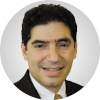Your first project is to inquire of the meet/tournament/event director your scope of responsibilities. Will you be required to supply health care for the spectators? Often, the event director will not know what is legally required in this regard: checking with your city or state health department is prudent. For example, the city's ambulances (EMS) may handle spectator injuries. However, if there is an admission charge, EMS may not provide services. The venue (stadium, track, auditorium, etc.) may provide or be under contract to supply emergency services, or you may have to pay an ambulance service to provide coverage.
Do you need to provide services at more than one location? Some large events will have a "medical" hospitality suite in a local hotel where the officials and athletes are staying. If this has not been done in the past, it might be a good idea to suggest this. It builds good will for your city as a venue for such events, and the athletes love it. Usually the medical services offered at the hotel are limited to providing the athletes with chiropractic care and massage therapy before and after their events. The convenience of such a service is clear: A competition might end at 7:00 p.m., but athletes may continue to get adjusted and massaged in the hotel until 12:00 a.m., or later.
How many days before or after the event should you have doctors on site? If many of the competitors arrive three days before the start of competition, you may want to start having some medical staff at the housing area or the competition site.
Advance planning is crucial for successfully organizing your sports medicine staff. For the USA/Mobil Outdoor Track and Field Championships, my Assistant Medical Director John Scaringe, D.C., C.C.S.P., and myself began planning almost a year and one-half before the event in June of 1991. We took the initiative of producing a staff manual with a mission statement and many policies, including a code of ethics for the staff. Many sections of our manual were incorporated into the Athletics Congress' manual, Medical Services for National Championships.
Observing another sports medicine staff at the same or similar event is extremely helpful. Some events like track and field championships are contested in different locations each year. Other events may travel to multiple locations within the same season. By observing how others handle health care at their events, you will get a better idea of what to expect. The more events you can observe, the better, since each medical director will run their sports medicine staff differently. By seeing how someone else does the job, you can incorporate some of their methods and put them to work for you.
See if you can get a post-event evaluation from the medical director of a competition. The medical director can provide valuable information and pinpoint the problem areas experienced in the administration of the sports medicine event.
The amount of work and delegation of work required in directing a medical team naturally depends on the size of the competition. At the Mobile Track and Field Championships, we had the following senior staff positions: medical director; assistant medical director; supervisor of staffing; supervisor of logistics and communication; chiropractic coordinator; medical coordinator; athletic trainer coordinator; podiatry coordinator; massage therapy coordinator; and EMT/paramedic coordinator.
Coordinators were required to recruit appropriately-trained members of their profession to volunteer to work for at least a four-hour shift. The logistics supervisor was in charge of acquiring all the supplies that were needed for the sports medicine staff. The staff supervisor watched over the activities of the coordinators.
You need to determine how many members of each profession you must have for adequate coverage. If you don't have previous experience in assessing the requisite manpower, it is better to err on the side of being overstaffed.
You will have to obtain, in advance, all the needed supplies and maybe even funding to purchase these supplies. We had many companies that donated supplies and the ACA Sports Council donated money to cover items not donated. Supplies included tape; bandages; and the other usual first aid supplies; ice; blankets; sheets; towels; coolers; hydroculator; ultrasound; and a generator and lights.
Communications required pagers for senior staff, a cellular phone, and two-way radios. We had four athletic trainers with radios around the track at all times, assuring quick response to emergencies. We had two ambulances and two hospitals on standby in case of emergency.
The ACA Sports Council is presently working on a manual that will detail how to organize and administer a sports medicine staff for a sporting event. Even with proper planning, there will always be unforeseen circumstances that arise. As a result, you may spend a majority of your time at the event solving problems.
Note: The term sports medicine and medical director here are not meant to be construed as relating to the profession of medicine but to be more generic and therefore relate to all the health care professions treating athletes.
Stephen M. Perle, DC, CCSP
Norwalk, Connecticut
Click here for previous articles by Stephen M. Perle, DC, MS.





